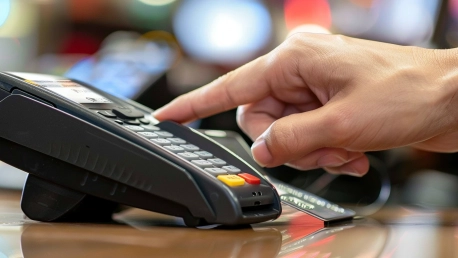The retail industry has always been at the forefront of technological innovations aimed at enhancing efficiency and customer satisfaction. Among the most transformative technologies is Radio Frequency Identification (RFID). This fascinating technology has evolved from its espionage roots to becoming a linchpin in modern retail operations, offering unparalleled benefits in inventory management, security, and customer experience.RFID technology leverages electromagnetic fields to automatically identify and track tags attached to objects. It comprises an RFID tag, which contains a transponder, and an RFID reader, which sends out an electromagnetic field to detect the tag. This seamless technology offers retailers real-time visibility into their inventory, drastically reducing the chances of items being out of stock or misplaced.
The Origins and Evolution of RFID Technology
From Espionage to Retail
RFID technology has a storied history, beginning as an espionage device employed by the Soviet Union during World War II. Originally designed for intelligence-gathering, these early versions of RFID were rudimentary, allowing for simple communication of information. Over several decades, the technology witnessed significant advancements. By the late 20th century, RFID had begun to find commercial applications, with retail emerging as a particularly compelling arena.As tools for basic tracking, early RFID systems were somewhat limited by cost and technological constraints. However, with advances in microelectronics and data processing, RFID systems have become increasingly sophisticated. These developments laid the groundwork for RFID’s entry into the retail sector, catalyzing a range of applications from inventory management to enhanced customer engagement. These systems are no longer confined to simple identification tasks but have evolved into comprehensive solutions that enable detailed analytics and predictive analytics.
Technological Advancements in RFID
The progress in RFID technology over the years has been remarkable. High-frequency (HF) and ultra-high-frequency (UHF) RFID systems have significantly improved data transmission speed and range. Writable tags now allow for more complex data storage, enabling advanced functionalities and interaction with other digital systems like the Internet of Things (IoT). These advancements have moved RFID beyond simple identification and tracking to playing a crucial role in real-time data collection and automation.Modern RFID systems are capable of providing detailed analytics, integrating with other technologies for a comprehensive automation approach, and offering levels of precision that were previously unattainable. This heightened accuracy and functionality extend RFID’s applications beyond inventory management to areas such as customer behavior analytics and strategic decision-making. As technological advancements continue to push the capabilities of RFID, the retail industry stands to gain increasingly sophisticated tools for optimizing operations and enhancing customer satisfaction.
RFID in Retail: Adoption and Implementation
The Role of Industry Giants
The adoption of RFID in the retail sector gained significant momentum when industry giants like Walmart mandated its usage among suppliers. This mandate not only justified the investment but also demonstrated the tangible benefits that RFID could offer. By driving such large-scale adoption, Walmart effectively lowered the barriers to entry for smaller retailers, who could now more easily see the return on investment (ROI) from implementing RFID systems.Given Walmart’s influence in the retail sector, other large retailers quickly followed suit. As these early adopters showcased improvements in inventory accuracy, reduced shrinkage, and increased customer satisfaction, the industry at large grew more comfortable with integrating RFID technology into their operations. The cascading effect has led to a broader acceptance of RFID, affirming its role as a transformative technology in retail. This widespread adoption underscores not just the utility but also the proven benefits that RFID technology can bring to various aspects of retail management.
Overcoming Cost and Implementation Challenges
While RFID’s advantages are well-documented, initial cost considerations posed obstacles to widespread adoption. The expense of RFID hardware, software, and tags initially seemed prohibitive, particularly for small to mid-sized retailers. However, economies of scale and technological advancements have steadily reduced these costs, making RFID increasingly accessible. The financial barriers have lowered, and RFID systems have become more cost-effective, thus enabling broader implementation across the retail sector.Implementing RFID involves more than just the purchase of technology; it requires training staff and integrating new systems into existing operational frameworks. Overcoming these challenges demands careful planning and phased rollouts, often starting with pilot programs to demonstrate value and iron out logistical issues. Retailers who have successfully navigated these challenges report significant improvements in efficiency and cost savings, justifying the initial investment. The benefits of RFID often outweigh the initial costs, resulting in streamlined operations, better stock management, and ultimately, enhanced profitability.
Applications of RFID in Retail
Inventory Management and Real-Time Tracking
RFID technology revolutionizes inventory management by offering real-time tracking and visibility. Unlike traditional barcode systems that require line-of-sight scanning, RFID tags can be read remotely, capturing data from multiple items simultaneously. This capability drastically reduces the time required for inventory audits and enhances accuracy. The real-time data provided by RFID systems ensures that retailers can maintain optimal stock levels, reducing the risk of out-of-stock scenarios.Effective inventory management is crucial for reducing operational inefficiencies and ensuring that popular products are always available. RFID technology allows for automated restocking alerts, minimizing human errors and expediting the replenishment process. This seamless inventory management translates to better customer service and higher sales, as customers are more likely to find the products they want in stock. The accuracy and efficiency brought by RFID ultimately lead to a more streamlined and profitable retailing environment, setting a new standard for inventory management practices.
Anti-Theft Measures and Asset Protection
One of the most compelling applications of RFID in retail is its use in enhancing security. RFID-based electronic article surveillance (EAS) systems provide a robust anti-theft solution. Unlike traditional EAS systems that rely on magnetic strips, RFID tags can store more data and offer more precise tracking, making it easier to identify and recover stolen items. The increased security afforded by RFID technology goes beyond mere deterrence, offering comprehensive protection against theft and unauthorized removal of merchandise.RFID-enabled asset protection extends beyond shoplifting deterrence. It aids in comprehensive forensic investigations, allowing retailers to track lost or stolen goods through the supply chain. Knowing exactly when and where a theft occurred enables quicker and more effective responses. These advanced security measures lead to a significant reduction in shrinkage, enhancing the overall profitability of retail operations. Retailers can leverage the power of RFID to secure their assets better, protect their inventory investment, and maintain a safe shopping environment for customers.
Enhancing the Customer Experience
Smart Fitting Rooms and Personalized Shopping
RFID technology opens new avenues for improving customer experiences. One exciting application is the smart fitting room, where RFID tags on clothing items interact with digital displays to provide customers with detailed product information. These displays can suggest complementary items, offer size availability, and even allow customers to request different sizes or colors without leaving the fitting room. This creates a more interactive and convenient shopping experience, meeting modern consumer expectations for immediacy and personalization.Personalized shopping experiences are becoming increasingly important as retailers strive to differentiate themselves in a competitive market. RFID enables customized recommendations and even targeted promotions directly to customers’ mobile devices based on their interactions with products. By understanding individual preferences and shopping habits through RFID data, retailers can offer more relevant and timely suggestions, enhancing customer satisfaction and encouraging repeat business. Combining RFID with other digital technologies promises an even more immersive and personalized retail experience, far beyond what traditional methods could achieve.









